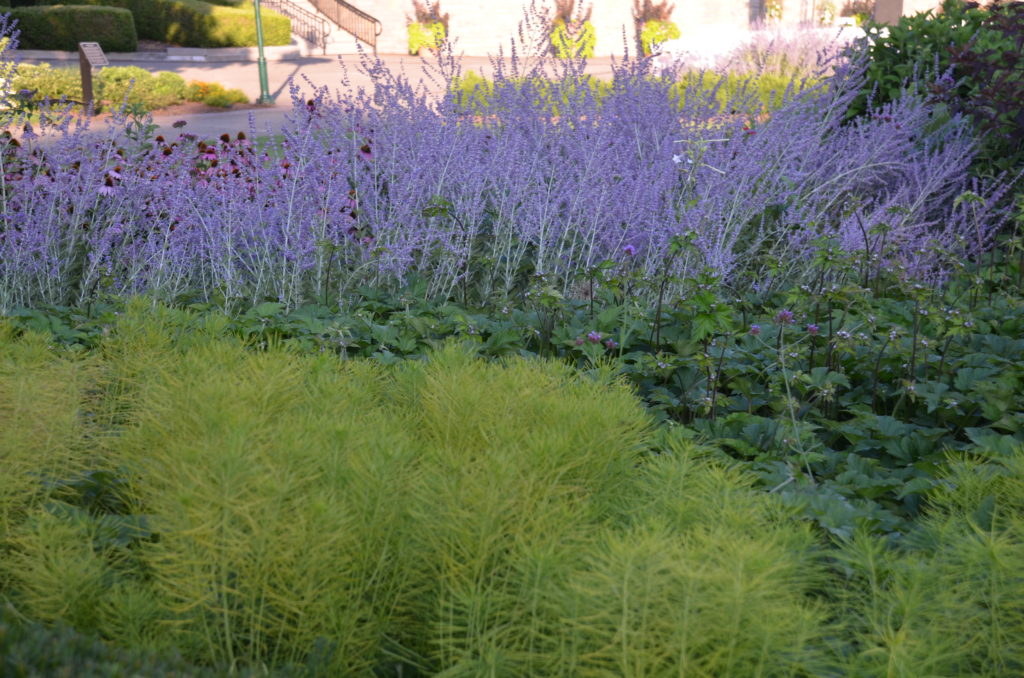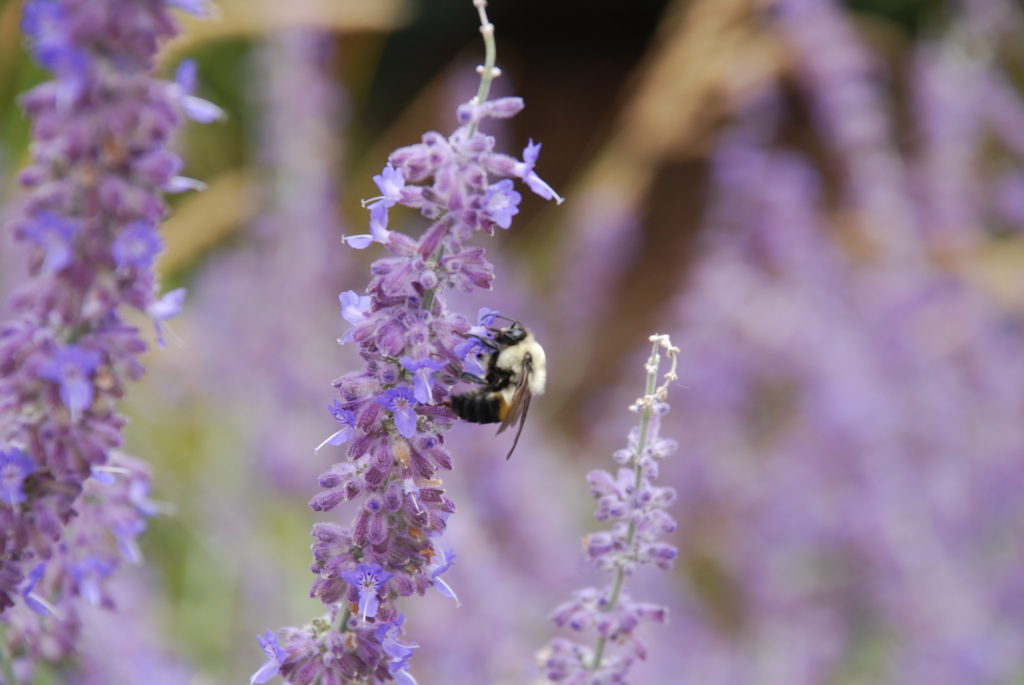
Russian sage (Perovskia spp.) is a popular garden and landscape plant valued for its lavender-blue flowers and long bloom period. Leaves are silvery green leaves. Long cultivated as an herbaceous perennial, Russian sage is technically a subshrub, a plant with a woody base that produces herbaceous stems. Perovskia spp. has recently renamed Salvia yangii and is a member of the mint family (Lamiaceae). Leaves and stems are pungently aromatic when crushed. Despite of its common name, Russian sage is not native to Russia, instead native to southwestern and central Asia.
Chicago Botanic Garden (CBG) (USDA Hardiness Zone 5b, AHS Plant Heat-Zone 5) recently completed an eight-year comparative trial of Russian sages in October 2020. Five cultivars earned five-star excellent ratings for their superior floral displays and consistently strong habits: Blue Spritzer, ‘Blue Jean Baby’, ‘Blue Steel’, ‘Little Lace’, and ‘Denim ‘n Lace’.
Russian sages are prized for their fuzzy lavender-blue flowers and silvery-filigreed foliage on upright, sturdy stems from mid-July to mid-October.
Most new introductions are chosen for their shorter, more compact habits. Bees and other insects were constant visitors during the long bloom period. No diseases or pests trouble this low maintenance perennial. Foliar chlorosis was a minor issue observed on all varieties, observed in high pH soils.
‘Blue Spritzer’ (‘Balperobritz’) has a bushy, vase-shaped habit—30 inches tall and 36 inches wide along with lighter lavender-blue flowers on airy spires and purple calyces. Blue Spritzer featured egg-shaped, silvery green leaves with entire margins; some leaves are occasionally serrated.
‘Blue Jean Baby’ is a compact bushy variety just under 30 inches tall and 32 inches wide. From early July to October, a profusion of lavender-blue and purple flowers; sage green, deeply dissected leaves.
‘Blue Steel’ is a seed cultivar that compared favorably to vegetative cultivars; 32 inches tall and 34 inches wide; airy dark lavender-blue flowers from July into mid-October; ovate, bluntly serrated green leaves with wavy margins and citrus-scented.
Little Lace (‘Novaperlac’) provided an impressive flower show from early July into early October; compact bushy plants—32 inches tall and 38 inches wide; deeply incised gray-green leaves and airy lavender-blue flowers.

‘Denim ’n Lace’ flaunt densely clustered, upright sky blue flower panicles from mid-July to mid-October; above high pollinator activity; 33 inches height and 48 inches width.
Read the entire research report on the Chicago Botanical Garden website.

 Posted in
Posted in 
